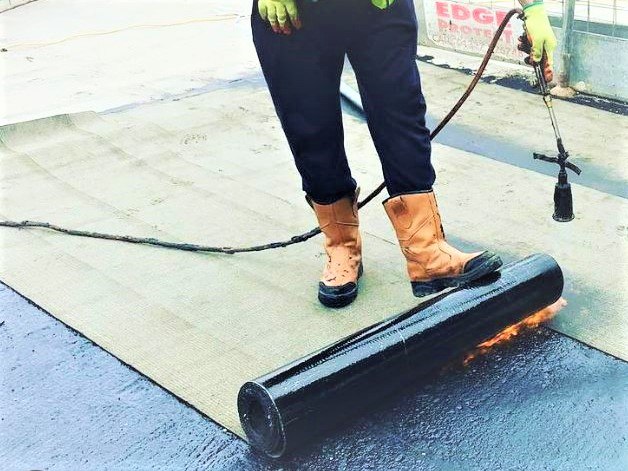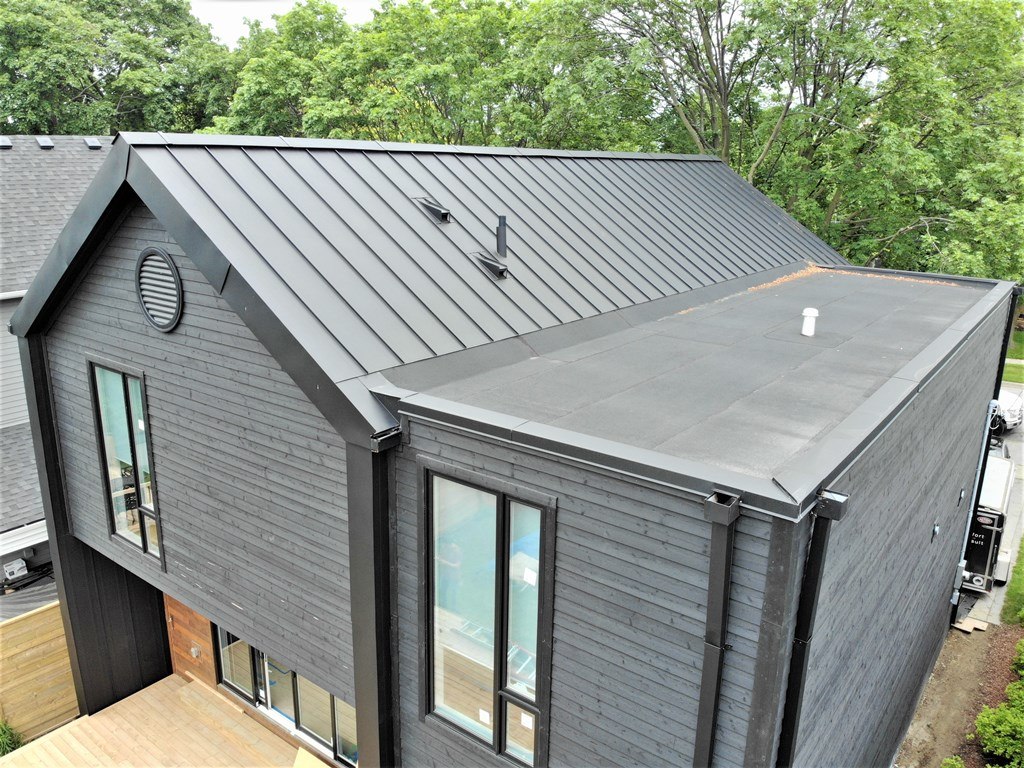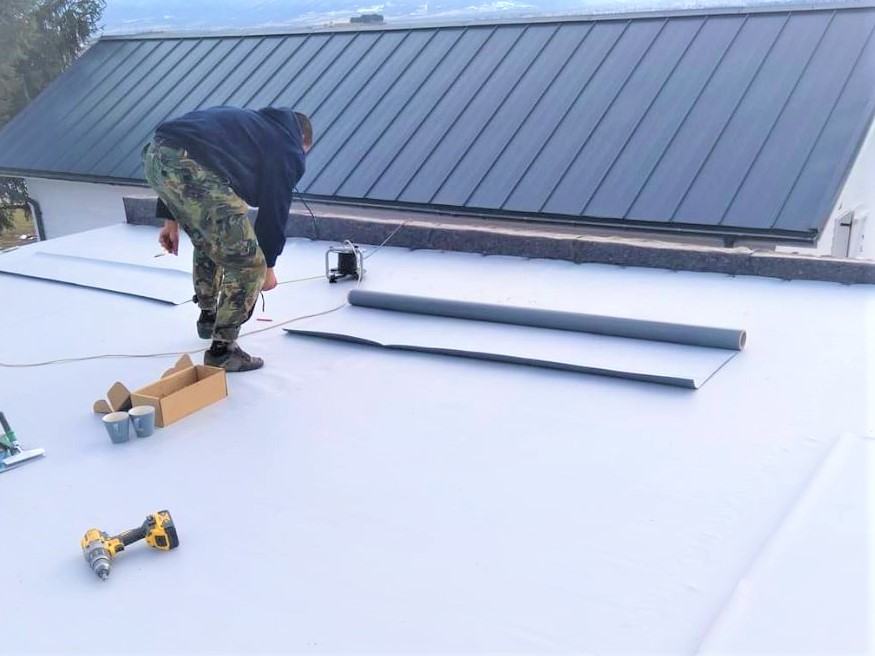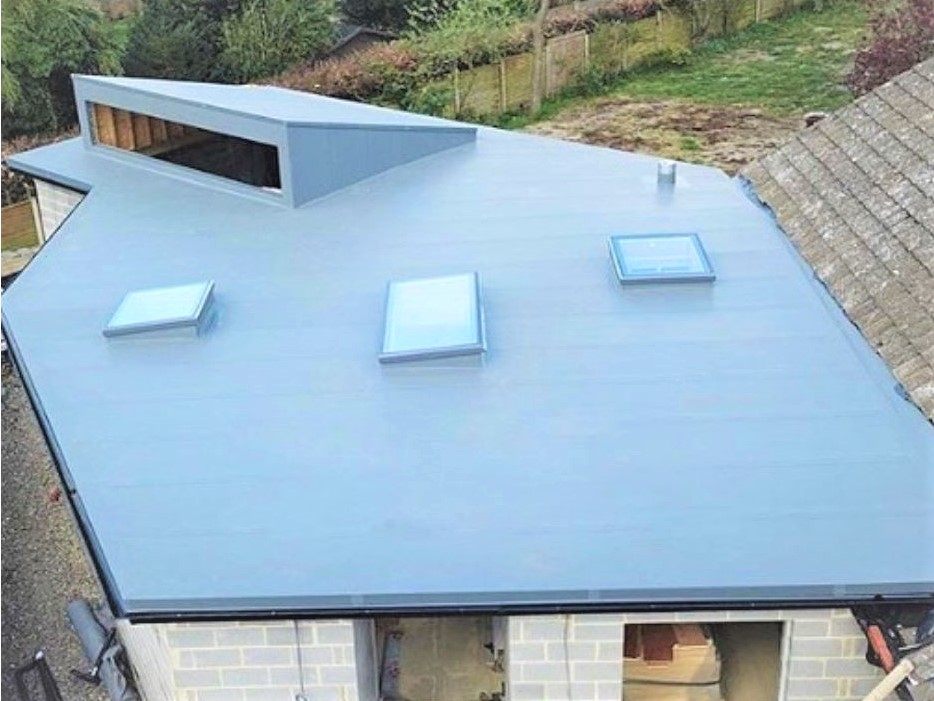The flat roof is one of the most practical and fairly simple structures to install. Despite many years of being on the market, such roofs are still exclusive to the market. A flat covering has many advantages, including the ease and speed of installation.
Mon - Sat 8:00 - 18:00
1680 Sismet Rd, Mississauga, ON L4W 1R4
Flat roofs
Various Kinds of Materials
There are many options to meet the needs of your roof: PVC, TPO, EPDM. As confusing as it may look, but these confusing acronyms stand for the materials suitable for your roof. Below we will dwell on these options and discuss the advantages and disadvantages of each material. The article will help you make an informed decision in regard to your project, whether it is a residential or commercial structure.
The elastomeric membrane, also known as modified bitumen membrane
The double-layered elastomeric membrane is a practical and effective material for those who are used to doing construction and repair work on their own. It suits for the construction of new houses, as well as for the reconstruction of roofs on old houses.
This is a roll-type material, on both sides of which there is an adhesive strip with polyethylene protection. This allows the installation of the material without any glue.
Make sure the contractors you hire for such job have the proper insurance policies because installing this material is a fire hazard. Also, note that some contractors may occasionally skip sealing joints (for example by skylights or ventilators). This will seriously reduce lifecycle of the material.

You can also apply the membrane for resurfacing by heating up the older membrane, pushing in the remaining bits, and installing a new membrane over it. This will minimize waste and environment impact.
By creating a stone surface, the material does not peel off with time. The membrane retains its elasticity during severe frosts, which allows for installation work in the winter period at a temperature of -20 degrees Celsius. The covering guarantees a high level of durability. When using a wooden base or water-repellent plates in the combination with membrane, you get a roof, on which you can easily move without fear of cracking or failing.
Advantages:
- Almost zero maintenance
- Does not wear or tears off
- Suits both – commercial and residential properties
Disadvantages:
- Somewhat more expensive than other options such as asphalt and gravel roofing
TPO
TPO membranes are the last generation polymer material (based on thermoplastic polyolefins) for flat roofs. The seams of the membrane are fixed using welding machines and hot air. This material is used to install roofing systems similar to EPDM roofing systems, but it is claimed to have more esthetic look and to be easier to install. Thanks to the reinforcing layer (polyester net), the material is more resistant to mechanical stress and fire, but it less elastic. The polymer contains up to 30% polypropylene, which gives the membrane high chemical resistance.

Among other advantages it can be said that this material is the most environment-friendly and fully recyclable.
Advantages:
- Demonstrate high class resistance to heat, fire, ultraviolet rays and extreme weather
- Fast and easy to install
- It available in various colors
Disadvantages:
- Because only one layer is applied, the surface is not as elastic and thus might easily deteriorate ((perforated)
- Not as resistant as other solutions
- Because the material is relatively new, it hard to state the length of its lifecycle
PVC membrane
PVC membrane is also an innovative waterproof material suitable for commercial, residential and industrial buildings. It is a single-layer type of roof covering, which is made from elastic polyvinyl chloride. Hot air welding guarantees integrity and total tightness. The necessary elasticity is achieved by the application of volatile plasticizers (up to 40%). As a result of the obtained elasticity, increases the temperature, water, fire and strength resistance.

Advantages:
- Resistance to thermal and chemical impact
- The membrane remains elastic in wide temperature range and thus demonstrates excellent waterproof qualities
- There is no need for special maintenance
Disadvantages:
- It Is not resistant to solvents, oils and bitumen materials
EPDM
EPDM stands for Ethylene Propylene Diene Monomer and belongs to the group of polymer roofing waterproofing materials which are based on synthetic rubber – polymerized ethylene-propylene-diene-monomer and other polymer additives. In a nutshell it is a synthetic rubber.

The EPDM membrane is used for industrial and commercial buildings, waterproofing of underground structures, reservoirs, canals, – wherever it is necessary to reliably and quickly waterproof a large surface, at facilities that require durable and high-quality materials.
Advantages:
- Totally recyclable
- Highly resistant to heat, fire, ultraviolet rays and extreme weather
- Remains elastic even at extremely low temperatures
Disadvantages:
- It is very important that the installation is carried out by skilled roofers
- Damages can be difficult to notice
- It is easily prone to damage (perforated).
Tar and Gravel
This is multi-layered system for your roof. What is meant here is a sheet of felt that is enforced by asphalt. The multi layers serve the purpose of water barriers. However, for such kind of roof to remain efficient it is important to regularly check it for deteriorations (leaks, dried sheets, craters, dust or whether the sheet detaches from the surface, etc.).
Advantages:
- It relatively inexpensive
- Small problems are easy to fix
Disadvantages:
- Maintenance requires a lot of effort
- Installation must be performed under certain weather conditions Proper installation conditions aren’t available (weather needs to be taken into consideration, the asphalt’s temperature as well, how thick it is, etc.);
- Low elasticity properties
What is good about green roof?
A green roof is a natural area created by adding additional layers of soil and different plants on roof top of a traditional roof. There are two types of reen roofs: intensive (with crops) and extensive (without any cultivation). Extensive green roofs are made with relatively thin soil layer and plants that do not require regular watering. Intense green roofing can be seen as a full roof garden project. As a rule, they are installed on top of shopping and entertainment centers or sky scrapers. In either case it is important to carefully plan the drainage system
Although the initial cost of a green roof might be quite high, it should be noted that such solution provides an opportunity for significant savings during the heating season. Often it is enough just to maintain the temperature, because the soil layer and the roofing pie both perfectly retain heat inside the building
In addition, the plants on the roof of the house give any building an aesthetic beautiful appearance, Moreover the whole structure serves as a source of oxygen. And the best thing about it is that the initial roof covering will be protected by the loam, doubling its lifespan!

How much does it cost to install a flat roof?
Roof Experts can do installation of all types of flat roofs. To get free estimation of flat roof, please contact us. Below is a table with the average costs to install or replace a flat roof in Greater Toronto, along with these roofing systems typical lifespans.
| Roof Type | Average Cost in Toronto (GTA) | Lifespan |
|---|---|---|
| Elastomeric Membrane | $9 – $15.00 / sq.f. | 20 to 30 years |
| TPO/EPDM | $8 – $11 / sq.f. | 25 to 30 years |
| PVC | $10-12 / sq.f. | 25 to 50 years |
| Tar & Gravel | $11 – $12 / sq.f. | 15 to 30 years |
